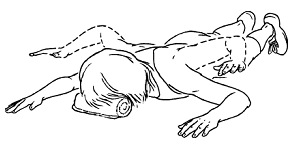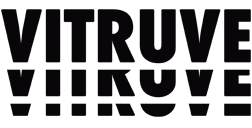8 de July de 2025
Prone Scapular Retraction: Exercise Guide, Tips and Benefits
Prone scapular retractions are a foundational exercise to improve shoulder health, posture, and upper-back strength. Especially valuable for athletes, office workers, and anyone dealing with rounded shoulders or poor posture, this movement retrains proper scapular control and contributes to balanced shoulder mechanics.
What Is a Prone Scapular Retraction?
The prone scapular retraction is a bodyweight exercise performed while lying face down (prone), typically on the floor or a bench. The goal is to retract—pull together—the shoulder blades without using the arms, focusing solely on activating the muscles that control scapular movement.
It’s often used in physical therapy and warm-up routines, particularly for shoulder rehabilitation, prehab, and posture correction.
How to Do Prone Scapular Retraction
- Lie Face Down: Position yourself on the floor or a bench, arms extended in front of you or by your sides, palms facing the floor.
- Set Neutral Spine: Keep your neck in line with your spine by gazing downward.
- Retract the Shoulder Blades: Without bending your arms, slowly squeeze your shoulder blades together and down.
- Hold and Release: Pause for 2–3 seconds, focusing on the tension in your upper back, then relax slowly.
Perform 2–3 sets of 10–12 controlled repetitions, maintaining good form throughout.

Benefits of Prone Scapular Retractions
- Improved Posture: Helps counteract forward shoulder posture caused by prolonged sitting or device use.
- Strengthens Postural Muscles: Targets the middle traps, rhomboids, and lower traps—essential muscles for healthy scapular positioning.
- Reduces Shoulder Pain and Injury Risk: Promotes better shoulder mechanics and may reduce the likelihood of impingement or rotator cuff issues.
- Supports Upper Body Lifts: Enhances shoulder stability and control, improving performance in movements like rows, pull-ups, and presses.
- Increases Proprioception: Reinforces mind-muscle connection, teaching you how to actively control your scapulae.
- Versatile and Accessible: Can be done anywhere, without equipment, making it perfect for home workouts or office routines.
These benefits are especially impactful when integrated into a structured strength and conditioning program designed to prevent fatigue and promote balanced muscular development.
Common Mistakes to Avoid
- Using the Arms Too Much: The movement should come from the scapulae, not the arms or shoulders.
- Shrugging Shoulders: Elevating the shoulders reduces activation of the intended muscles. Focus on pulling the shoulder blades down and together.
- Neck Hyperextension: Lifting the chin or looking forward strains the neck. Keep a neutral gaze downward.
- Holding Your Breath: Breathe steadily to stay relaxed and avoid unnecessary tension.
- Rushing the Movement: Quick, jerky reps reduce effectiveness. Emphasize control and muscle engagement.
Use slow, controlled reps and, if needed, record yourself to check your form and ensure correct technique.
Variations and Progressions
- Arms at “W” or “T” Position: Change arm position to emphasize different parts of the back.
- With Light Weights: Add small dumbbells for increased resistance.
- Incline Bench Retractions: Performed on a slight incline to challenge range and control.
- Band-Assisted Retractions: Add resistance bands for extra tension and activation.
These variations help you scale intensity and maintain variety, which is crucial to avoiding training fatigue.
How to Program Prone Scapular Retractions
Include them in your warm-up, active recovery, or accessory work 2–4 times per week. They are especially useful for athletes who perform a lot of pressing or overhead work, and for anyone sitting at a desk for extended periods.

FAQs About Prone Scapular Retractions
What muscles are prone to scapular retraction?
The rhomboids, middle trapezius, and lower trapezius are the primary muscles responsible for scapular retraction.
Do scapular retractions build muscle?
Yes, they can help build endurance and strength in the upper back, especially when used consistently and progressively loaded over time.
What is the scapular retraction?
It’s the motion of drawing the shoulder blades together toward the spine, a key movement for shoulder stability and posture.
How to fix a retracted scapula?
If the scapula is overly retracted or fixed in place, mobility drills and exercises focusing on dynamic scapular control, including both protraction and retraction, can help restore balance.
How to tell the difference between scapula retraction and depression?
Retraction pulls the shoulder blades inward toward the spine, while depression moves them downward toward the hips. They often occur together in proper scapular mechanics but involve different muscle groups.
Prone scapular retractions are a simple yet powerful tool to build better posture, shoulder health, and upper back strength. Whether you’re recovering from injury or improving performance, incorporating them into your training routine is a smart investment in long-term movement quality.
